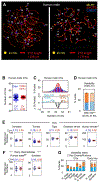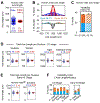Per-Nucleus Crossover Covariation and Implications for Evolution
- PMID: 30879787
- PMCID: PMC6472931
- DOI: 10.1016/j.cell.2019.02.021
Per-Nucleus Crossover Covariation and Implications for Evolution
Abstract
Crossing over is a nearly universal feature of sexual reproduction. Here, analysis of crossover numbers on a per-chromosome and per-nucleus basis reveals a fundamental, evolutionarily conserved feature of meiosis: within individual nuclei, crossover frequencies covary across different chromosomes. This effect results from per-nucleus covariation of chromosome axis lengths. Crossovers can promote evolutionary adaptation. However, the benefit of creating favorable new allelic combinations must outweigh the cost of disrupting existing favorable combinations. Covariation concomitantly increases the frequencies of gametes with especially high, or especially low, numbers of crossovers, and thus might concomitantly enhance the benefits of crossing over while reducing its costs. A four-locus population genetic model suggests that such an effect can pertain in situations where the environment fluctuates: hyper-crossover gametes are advantageous when the environment changes while hypo-crossover gametes are advantageous in periods of environmental stasis. These findings reveal a new feature of the basic meiotic program and suggest a possible adaptive advantage.
Keywords: chromosome axis legngth; chromosome loops; crossover; crossover covariation; crossover variance; evolution of recombination; evolution of sex; genome-wide recombination rate; meiosis; recombination.
Copyright © 2019 Elsevier Inc. All rights reserved.
Conflict of interest statement
Declaration of Interests
The authors declare no competing interests.
Figures






References
-
- Barton NH (1995). A general model for the evolution of recombination. Genetics Research 65(2), 123–144. - PubMed
-
- Barton NH, Charlesworth B (1998). Why sex and recombination? Science 281, 1986–1990. - PubMed
-
- Bell G (1982). The masterpiece of nature: the evolution and genetics of sexuality. University of California Press; (Berkeley and Los Angeles: ).
Publication types
MeSH terms
Grants and funding
LinkOut - more resources
Full Text Sources

